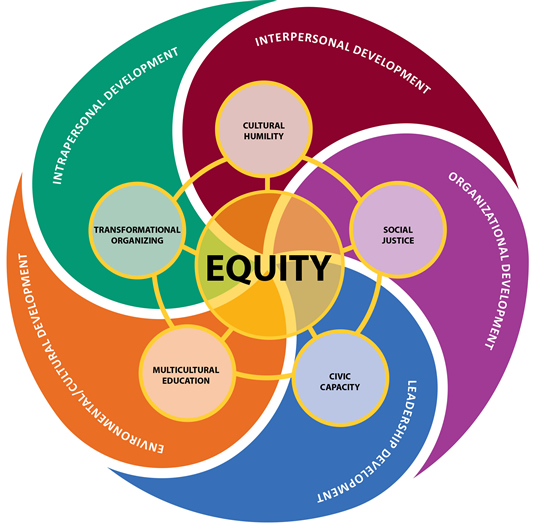 |
|
Equity and Inclusion for Partnerships |
|
Equity includes the broadest possible range of experiences, backgrounds and perspectives, while inclusion means creating an environment where all people and ideas are valued. The diverse and inclusive partner will help build an inclusive environment where all employees feel they belong: they are recognized, allowed to express their thoughts, have the ability to make contributions and are able to bring their best selves to work every day (Inclusion, n.d.). Recognize and allow the differences in culture/practice that exist among partners: Do not adopt an approach that suppresses different cultures and practices, as it will lead to conflict. Recognize and accept that others have a diversity of skills and innovative abilities. For example, only address significant differences if the lack of coordination of different planning and decision-making processes within partner organizations prevents implementation of partnership strategies/activities (Strengthening, 2010. Each individual will bring different skills and expectations to the task - managing this diversity 3 examples of how Equity and Inclusion strategies can be used to create, and enhance, partnership success.
|
|
REFERENCES Equity - Lathardus Goggins II, Ed.d. (n.d.) Retrieved from: http://successfulacademics.com/BlackChildSEL/SEL-n-Equity.html Inclusion and Diversity - TJX.com. (n.d.). Retrieved from: https://www.tjx.com/responsibility/workplace/inclusion-and-diversity Strengthening Nonprofits: A Capacity Builder’s Library (2010). Partnerships: Frameworks for Working Together, Managing Partnerships. National Resource Tennyson, Ron. The Partnering Toolbook (2011). An essential guide to cross-sector partnering: Delivering Successful Projects and International Business Leaders Workplace Diversity Strategies | Chron.com. (n.d.) Retrieved from: https://smallbusiness.chron.com/workplace-diversity-strategies-3031.html |
|
© 2020 Sam Lopaze, a student at Arizona State University - EDU402 |
|
